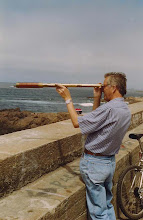O ARGUS em provas de mar, 1939
Pois é verdade, no trabalho que postei no meu Blogue Navios à Vista, “Temos Navio, Temos o Santa Maria Manuela, é da Pascoal!”, agora com a aquisição do Polynesia, lá em St. Maartens, nas Arubas, pela Pascoal & Filhos, já poderemos afirmar “Temos Navios, Temos o Santa Maria Manuela e o Argus também, são da Pascoal!”.
O navio é de muito boa construção, até porque foi preparado para campanhas extensas nos mares dos gelos da Terra Nova, Labrador e da Groenlândia. Note-se que o Polynesia, como navio de cruzeiros, tinha manutenção regular e apenas há algum tempo foi abandonado pelo armador, tendo, ultimamente permanecido arrestado, o que sucede, frequentemente com muitos desse tipo de navios.
Se prolongássemos de braço dado o NTM Creoula com os seus dois gémeos, o que seria interessante um dia ocorrer, teríamos a verdadeira imagem do trio dos “Lugres do Gelo” ou “Cisnes Brancos do Noroeste do Atlântico”, três dos últimos quatro representantes da mundialmente conhecida “Portuguese White Fleet”.
Estão de parabéns todos aqueles que se interessam por estas coisas do mar e dos navios, antigos capitães, pilotos, maquinistas, pescadores dos navios bacalhoeiros, que todos eles sofreram na pele os rigores da Faina Maior, Portugal e sobretudo a empresa Pascoal & Filhos, que de certeza irá ter grande sucesso no empreendimento, que está a levar a cabo.
Uma surpresa destas, até parece milagre! Allan Villiers lá nos Céus deve ter feito alguma prece!
Agora o que é deveras lamentável, é os nossos governantes ainda não se terem pronunciado pelo menos com uma simples palavra de estímulo, só lhes ficaria bem! Devem andar atarefados com as penhoras a torto e a direito e com o ridículo prolongamento da idade das reformas dos trabalhadores baseados na “esperança de vida dos Portugueses enriquecida de maleitas”!
Imagem: (c) autor desconhecido










